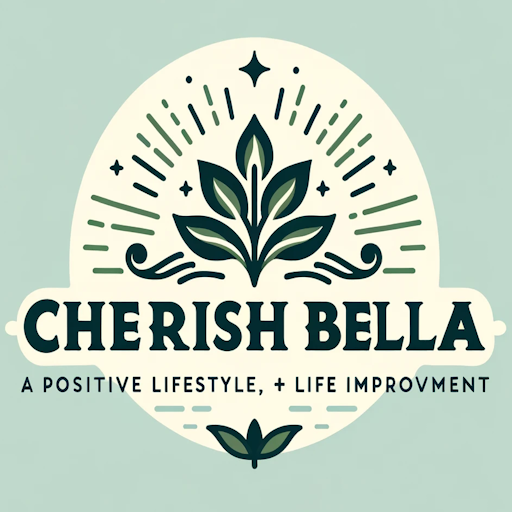
Empowering Your Family with Natural and Healthy Lifestyle: Essential Facts and Strategies
Welcome to our bubbling community as we plunge into the process of embracing a healthy lifestyle for families. Our aim is to educate and motivate individuals towards a natural healthy way of life that supports not only them but also their families. We are on this journey together, discovering the joy and benefits of living healthily.
Understanding the Basics: A Foundation for Healthy Families
Here are some eye-opening health facts you may not know about. Were you aware that making small changes in lifestyle can help prevent chronic diseases by up to 80%? True, it is! When we incorporate more natural foods and activities into our daily lives, we can protect ourselves from many modern ailments. Also, it’s important to demystify certain notions. For example, a lot of people tend to believe that living naturally is time-consuming and expensive. Well however , we would like to inform you how it can be accessible as well as enjoyable for all. Grasping these realities about health is the initial step toward a transformative journey which will change your family’s lives.
Pillars of a Natural Healthy Lifestyle
Nutrition: The Heart of Health
It’s all about nutrition. Including whole unprocessed foods in our diet goes a long way in improving our well-being. Just imagine sitting down at the supper table with your children and having an assortment of vegetables, fruits, whole grains, lean proteins in different colors before you all. It’s not just nourishment; it is experiencing wellness together as one family unit . And don’t worry because these changes are simpler than they look like . Every step starting from planning grocery lists to preparing meals can be a discovery mission . Embracing natural healthy lifestyle entails conscious decisions made through taste appreciation and body nourishment.
Physical Activity: Move as a Family
We can all experience the joy of movement at some point in our lives. Physical activity forms part of any family’s healthy lifestyle whether this means dancing away in the living room, a family hike or biking around the park. It is more than an exercise; it’s making memories and building attachments together. Additionally, the active life increases mental well-being , relieves tension as well as giving us a good night rest. Our ambition should be to find exciting ways to introduce more movement into our lives on a daily basis, teaching our little ones how to take care of their bodies.
Mental Well-being and Sleep: The Unsung Heroes
When seeking for a natural healthy lifestyle, we must not overlook our emotional health as well as sleep needs . In today’s fast-paced world, taking time to breathe, practice mindfulness or just enjoy each other’s presence can do wonders for one’s mind. Equally important is establishing routines that ensure everyone gets enough sleep. A happy family is one that has had enough sleep . We should treasure our mental wellness and sleep just like physical heath since they are intertwined so deeply.
Creating a Healthy Family Environment
Establishing healthy habits together creates a basis for lifelong physical wellbeing. It’s about creating a supportive environment where everyone feels inspired to make improved choices. This includes things like cooking together and going outside regularly which make us more attached as family members and strengthen our commitment to living healthily. Of course, don’t forget our homes! Reducing the amount of toxins in them by using natural cleaning products instead of regular brands and also filling them with plants improves our well-being. We can create a haven that supports an instinctively healthy life style.
Embracing Flexibility and Creativity in Our Healthy Lifestyle
In order for families to maintain a natural way of living, flexibility is very crucial. Life is full of surprises and sometimes your best laid plans may fail you. You can have that cheat day or miss your gym session or even call for takeout when you are too tired to cook. It’s important not to let these moments get in the way of the big picture though. Instead, we can use them as opportunities to teach resilience and adaptability. To keep up these routines without making them boring we can come up with different ways such as making meal preparation a game or incorporating some workout into normal house chores.
Celebrating Diversity in Our Healthy Choices
Each family has its own dynamics so what works for one may not necessarily work for another one. Inculcating this diversity promotes a naturally healthy lifestyle. Some households do well on plant-based diets while others may desire more lean meats and fish incorporated into their meals. The important thing is finding what is most recommendable for each individual involved, including other loved ones’ preferences concerning nutrition needs being catered for too . Encouraging open dialogue about these choices helps everyone feel involved and respected in the decision-making process.
Fostering a Community of Health-Conscious Families
We’re stronger together isn’t it? By connecting with other families who are also on the path to a healthier lifestyle, we can share resources, recipes, and success stories that inspire us all to keep going. In this respect, social media platforms , local community groups or even school endeavors may come in handy. Let’s go together and make others join us too. Like a ripple effect spreading through water encouraging other families to consider joining the journey.
Overcoming Challenges with Love and Support
We appreciate that becoming health conscious for families is not without hurdles. Time constraints, budget limitations, and catering to different tastes can make it seem daunting. But remember we are in this together as a family. By sharing our struggles and victories, we can find creative solutions that work for everyone. It’s about progress not perfection . Supporting each other through small wins responding in terms of goals assists these challenges turn into growth opportunities.
In conclusion, embarking on a journey towards a healthy lifestyle for families is one of the most rewarding decisions we can make. Not just about facts regarding health; it’s also leaving behind legacies of wellbeing & happiness for kinfolk as well! Towards this end therefore when we choose “natural living” we set a stage where healthy families thrive collectively as well. Let’s take this step forward, hand in hand, and make health and happiness a cornerstone of our lives. Share this post with your friends and family so we can inspire an entire movement dedicated to healthy living for all.

